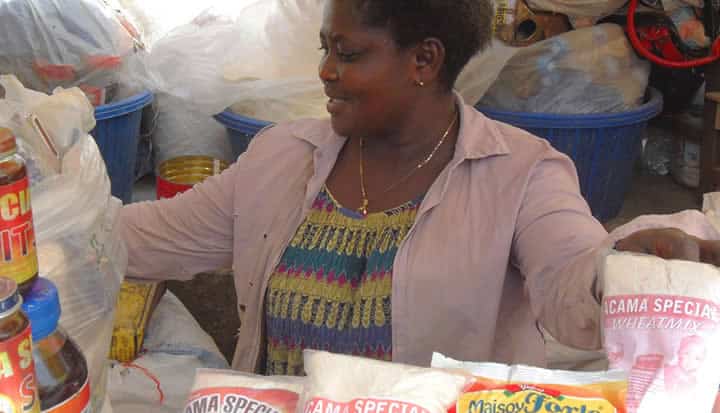As nutrition moves up the agenda of development organisations, donors are on the lookout for nutritious foods. And they want models of businesses getting healthy foods to the people who need them, all without requiring too much outside investment.
In previous posts, we’ve seen how big business is getting involved in addressing undernutrition, by selling products to poor consumers or marketing to emergency relief agencies.
On a recent trip to Ghana, I learned about a success story featuring businesses that are much smaller.
Weanimix: From nutritious idea to popular business model
This emerging success involves hundreds of micro businesses producing ‘weanimix’, a porridge-like complementary food fed to infants as they transition from exclusive breastfeeding to eating solid foods.
In Ghana, mothers conventionally fed their children complementary foods made with flour from cereals. A common mix made with roasted corn is known as Tom Brown. But there’s a problem with these traditional mixes: they lack the proteins and micronutrients that babies need during weaning, a crucial period when undernutrition can affect a child’s development and lifelong health.
Because of these deficiencies, the Ghana Health Service and UNICEF began teaching women’s groups how to make a modified weaning food recipe during the 1980s: the new mix combined 4-parts cereal (maize) and 1-part legume (soybeans, cowpeas, and groundnuts). The legumes added protein crucial to infants’ health. The new recipe, called ‘weanimix’, quickly spread across Ghana.
Fast forward 25 years, and weanimix has gone from nutrition education to a viable business model, with products sold at markets and shops across Ghana.
What’s interesting is the way weanimix spread: Ghana Health Services and NGOs provided training as a key element of ante natal care; but at the same time women told their relatives and neighbours about it. Some built small businesses preparing weanimix and selling it in their neighbourhood or at local markets.
Today, some of these kitchen enterprises have grown into substantial food processing businesses, and a variety of weanimix brands can be found in supermarkets and open markets.
Is small business more complicated? Challenges of regulating nutrition content and earning consumers’ trust
But the large number of businesses and the small scale of their operations also makes it difficult to assure consumers of the nutritional value of weanimix. The Ghana Food and Drugs Board is in charge of regulating nutrition information on food products. But they struggle to track and test so many products and small producers.
All these products create a problem for consumers too. A recent study from the International Growth Centre showed that not all weanimixes are created equal: there are big differences in their nutrient content. Some contain much less than what infants need. Another study (pdf) shows that without fortifying weanimix with micronutrients (vitamin A, iron, zinc), the standard recipe does not meet infants’ needs.
So how do consumers decide?
First of all, many consumers are unaware of the nutrition needs of infants – they may not even know to look for a healthier weaning food. They are more worried about whether their baby will eat it.
But even if they are looking for nutrition, consumers may not trust the claims on the package. While some weanimix packets have a nutrition label like in developed countries, others simply say they contain ‘energy, protein, vitamins’ or feature an image of a smiling baby. Some mixes are sold in unlabelled sachets. So consumers probably rely on the advice of neighbours or the person they buy from.
These reasons help explain why weanimix is available from only a limited number of shops and market vendors. According to one consumer survey, most women continued to use cereal-only weaning foods.
How can we build value chains for nutritious complementary foods?
So how do we address the challenges of nutrition in the marketplace for weaning foods? Can consumers trust these products to help their babies be healthy?
And can we create incentives for businesses to produce nutritious foods for the people who need them?
For now, I’m going to leave you with a shameless plug for my next post. Tune in next week for a look at a couple of interesting efforts to improve the weanimix business in Ghana. We’ll see that these models tell us a lot about what businesses can and can’t do for nutritious foods.
This post originally appeared on the IDS Globalisation and Development Blog.It is based on research co-authored with Dr Henry Anim-Somuah of the Department of Agricultural Economics at the University of Ghana, Legon.










